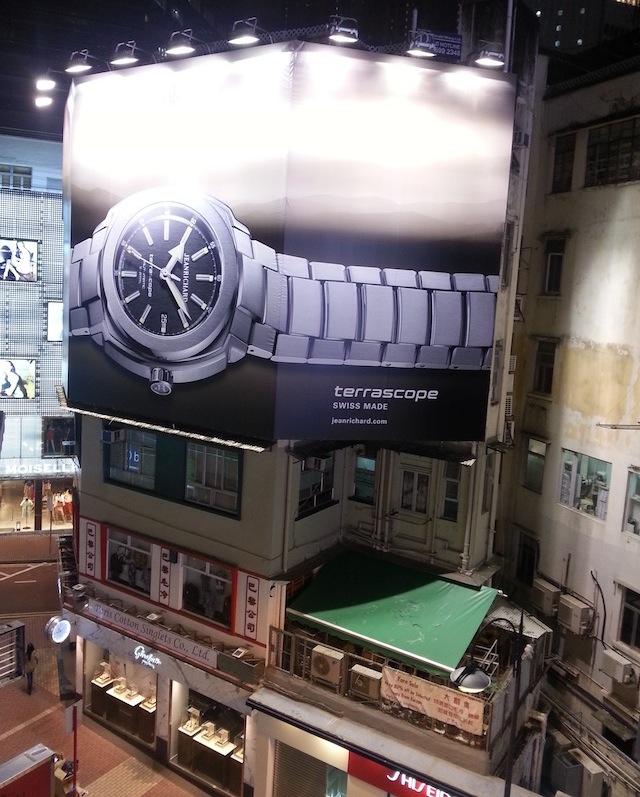A growing source of pollution in Hong Kong: light


HONG KONG -- In an apartment in Hong Kong’s Causeway Bay area, a major shopping district, the light that floods in through the large windows could be a selling point -- except the light from outside lasts throughout the night.
Peeling back a closed curtain offers only a vague clue to the time --it is always bright out. In the middle of the night, the sky still glows in slate blue.
A recent study showed just how bright the night sky is here. Jason Pun, the head researcher and a physics professor at the University of Hong Kong, said his study was “by far” the most systematic one done around the world, while similar research in Spain, Italy and Holland is under way.
“I have seen some of their interim results. Based on what I have seen and recall, I do not remember any place that has as high an average brightness as Hong Kong,” he said.
Pun’s team set up data collection stations in 18 spots around the city, ranging from places in the middle of town to suburban and rural areas. The equipment monitored the night sky’s brightness continuously, collecting more than five million readings over a two-year period.
“This way, at least we are in a position to consider other factors which can affect brightness, like the moon, the clouds, when we actually study and look at these numbers,” he said.
The station that recorded the brightest sky at night, in the urban area Tsim Sha Tsui, had an average reading that was more than 1,000 times the brightness of the international standard of "dark sky," which is a dark moonless sky not "polluted" by artificial lightings -- and it was caused by the area’s large number of billboards and floodlights.
Hong Kong is known for its skyline, which is made all the more striking at night when LED lights on buildings are turned on. Lighted billboards packed along the streets have also become a trademark of Hong Kong.
But the problem of too much lighting has been on the public and the government’s radar in recent years, with the number of complaints growing. In 2009, the year with the most recent figures, there were 389 complaints. In commercial areas like Causeway Bay, giant ads are illuminated by spotlights pointing downward and upward, and they are the main culprit behind the constant glow in the sky.
A government study that began in 2009 says that lighting contributes to safety on streets, but “the community is also aware of the impact external lighting may have on their daily life.”
The report does not, however, discuss the adverse effect on quality of life -- perhaps suggesting just how hard it is to quantify the impact light pollution has on human health. It lists the two concerns over light pollution as light nuisance and energy wastage.
“Evening light is so bright that it’s extremely intrusive. Sometimes it feels brighter than the day,” Pun said. “Also it’s a very crowded city, so that means a lot of people have to live under very bright-light conditions, and we certainly believe that could affect their quality of health, their quality of sleep.”
Yet there are no laws limiting brightness or duration of outdoor lighting. Places with such legislation include Italy, the Czech Republic, Slovenia and some parts of the U.S.
Understandably, the urgency seems lesser than environmental problems like air pollution, which impacts health in a more obvious way. Some scientists are concerned that lighting confuses birds and nocturnal animals in their migration and breeding behavior. But more pertinent to a place like Hong Kong is the excessive energy consumption.
Although there has been a push for legislation by green groups, only voluntary guidelines have been established so far, recommending businesses install automatic switches to turn off external lighting at 11 p.m., for example.
Last year, homeowners threatened to bring a lawsuit against a shopping mall whose flashing LED billboard measured three stories high. They said the lights, which were facing their luxury apartments, scared off potential tenants and brought down property values. The mall did start to dim the lights earlier, but the billboard still remains lit until midnight.
Members of a task force set up to focus on the issue have said that so far, 20 months since they began discussion, they have been unsuccessful in defining any laws because of a lack of consensus among the industry players, concern groups and experts.
The head of the green group Friends of the Earth told a local paper, the South China Morning Post, that tourism, advertising and property interest groups have been unwilling to compromise for limits to be placed on lighting.
Aside from the unpleasant glare, Pun, an astronomer by training, has yet another concern regarding Hong Kong’s nighttime brightness. “We can no longer see the night sky under the city lights of Hong Kong,” he said.
“A lot of young people have actually not seen the night sky, which is a shame, because China has a long historical culture of studying the night sky. That’s part of our culture, and that’s something we’ve lost.”
Photo: Vanessa Ko
This post was originally published on Smartplanet.com